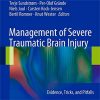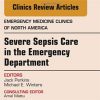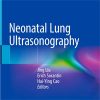Prevalence of COVID-19-Associated Pulmonary Aspergillosis
mdpi.comFirst reports of cases and case series of COVID-19-associated pulmonary aspergillosis (CAPA) emerged during the first months of the pandemic. Prevalence rates varied widely due to the fact that CAPA was, and still remains, challenging to diagnose in patients with COVID-19-associated acute respiratory failure (ARF).
The clinical picture and radiological findings of CAPA are unspecific and can resemble those of severe COVID-19.
Hence, mycological evidence became a key component in establishing a diagnosis.
However, blood tests lack sensitivity in early treatable phases of CAPA and once positive, mortality has been shown to exceed 80% despite systemic antifungal therapy. The primarily airway invasive growth in non-neutropenic patients and the late occurrence of angioinvasion in the course of disease may mainly account for these diagnostic obstacles.
Testing of bronchoalveolar lavage (BAL) is therefore crucial in the diagnostic process, but was rarely performed during the early phase of the pandemic, which potentially interfered with the accuracy of reported prevalence. Current guidelines recommend treatment of CAPA during its early airway invasive phase, which may result in some overtreatment (i.e., treatment in patients that may not develop angioinvasive infection) and adverse drug events, yet there is no viable alternative approach.
Timely treatment of cases needs to be ensured for patients with mycological evidence of CAPA in the lower respiratory tract given the independent contribution of CAPA to devastating mortality rates of around 50% that have been shown in multiple studies. Here, we review the evolution of reported CAPA prevalence and the role of CAPA as an important opportunistic infection affecting COVID-19 patients in intensive care units (ICUs).

















